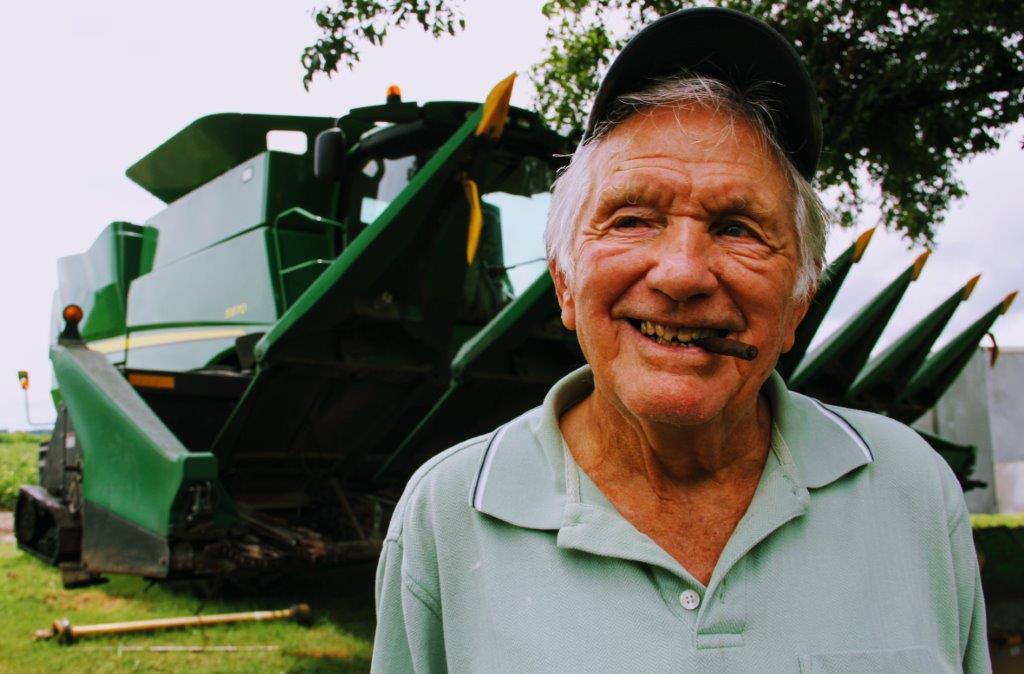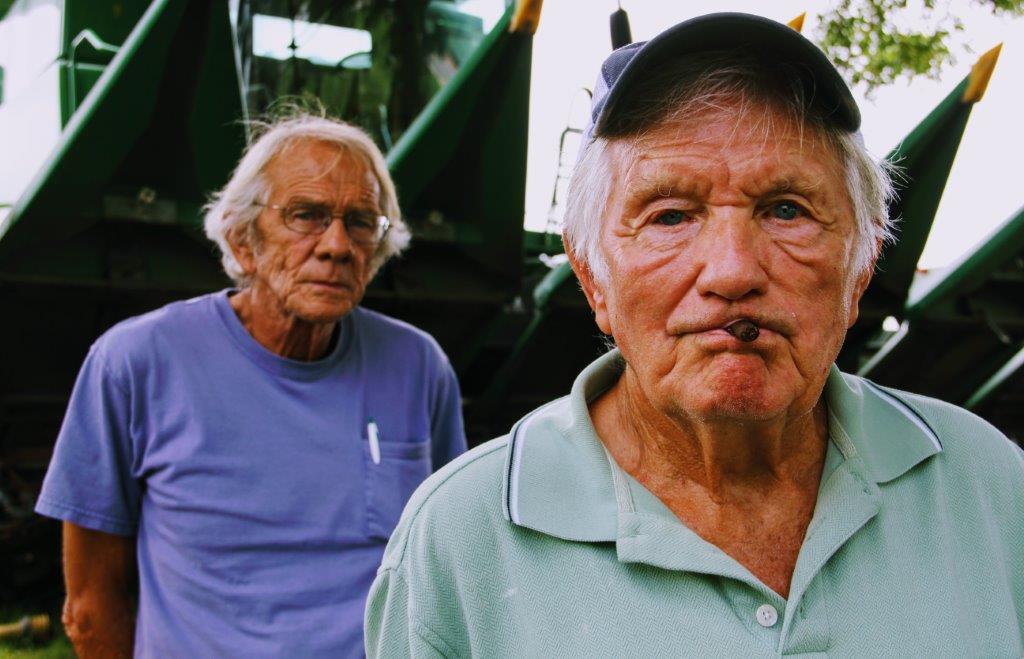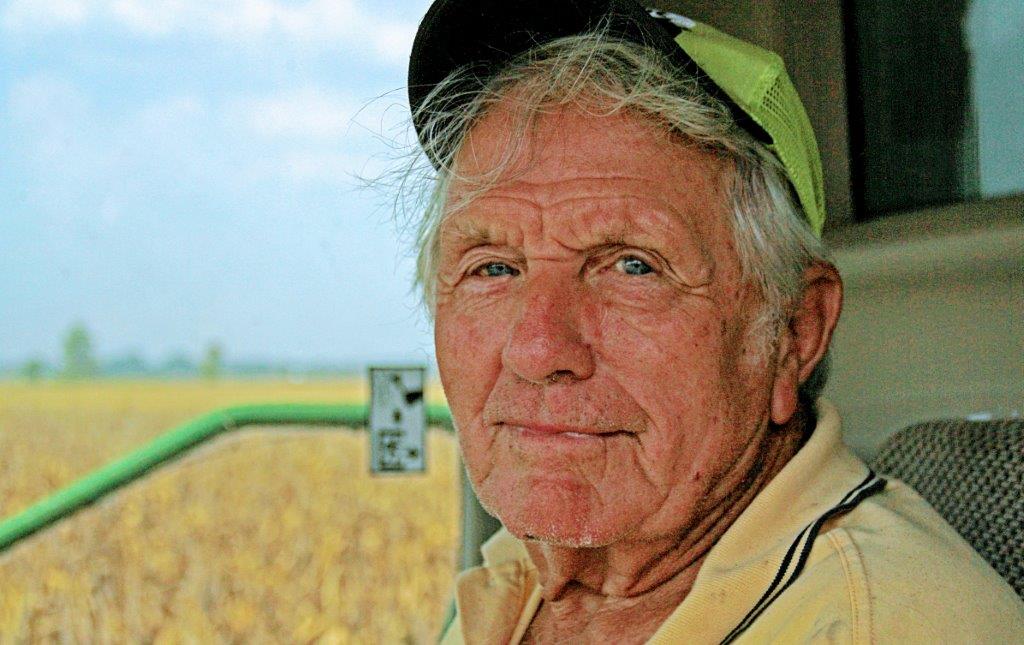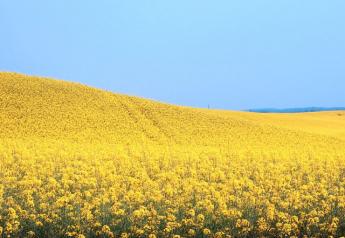US Farming Loses the King of Combines
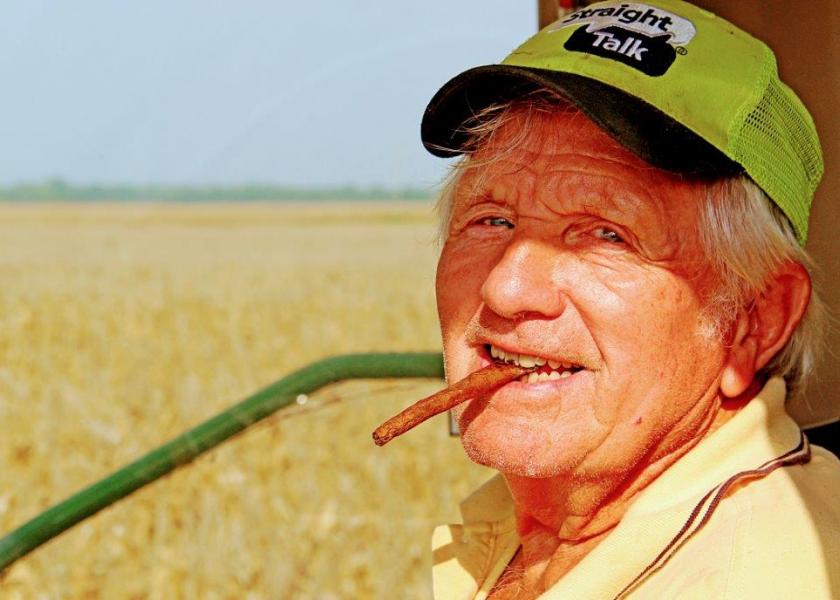
Some men write their own chapters in agriculture’s book of history.
An American farming titan, Jessie Small, has passed on, and with him goes a sizable chunk of U.S. historical lore. In 1951, Small barnstormed a career behind the wheel of a combine, blazed a grain trail coast-to-coast for 62 years, attracted nationwide fame, racked up some of the highest acreage numbers of all time, and helped usher in the era of modern farming.
On the morning of Jan. 2, 2021, in Senath, Mo., Small, 97, exited the doors of the Senath Church of Christ in a flag-draped casket, and began his Last Ride—a 12-mile John Deere combine drive to nearby Kennett and a final resting place at Memorial Gardens Cemetery. The spectacle of a casket mounted on the feeder house of the giant green and yellow vehicle, rumbling down the streets of a small Show-Me State town, was a sight to behold, but the surreal nature of the display hid the plain truth from most of the passersby and witnesses: The man within the casket had lived a life almost no one in the crowd could comprehend. In fact, Small was a legend hidden in plain sight.
Into the Swamp
When heart failure made its final claim on Dec. 30, as the calendar ticked away the final days of 2020, Small had already surrendered the combine cab several years prior, but had cut grain into his early 90s, only relinquishing the wheel due to the frailties of failing eyesight. However, had Small’s eyes held strong, he would have continued combine work through his 90s, likely following the same health regimen of his 80s—13 hours a day in the box during harvest, and six days a week standing in a fishing boat during the off-season.
“Age ain’t got nothing to do with it,” Small consistently preached in a gravely drawl fronted by a lively grin, all the while keeping an ever-present Roi-Tan cigar—unsmoked, merely chewed, and changed every three days—hanging from the corner of his mouth. He claimed no grand health secrets or keys to longevity, except one: hard work.
Modern American agriculture was built on the backs of individuals such as Small, but to get a grip on the unlikely trajectory of his life, and measure the grand footprint that carried him over farmland from Canada to the Gulf of Mexico, it’s best to jump back to the beginning—to a log cabin lost in a wooly Bootheel swamp.
Huck Finn
Born in a southeast Missouri bottom in 1923, in a one-room, 24’-by-24’ log cabin between the St. Francis and Varney rivers, Small was raised without electricity on 160 acres of dense, mosquito-laden woods, punctuated by 10’ diameter cypress trees climbing 120’ into the canopy. A wood-burning stove provided a single source of heat in the cabin, and a wick dipped in kerosene offered a dim source of light.
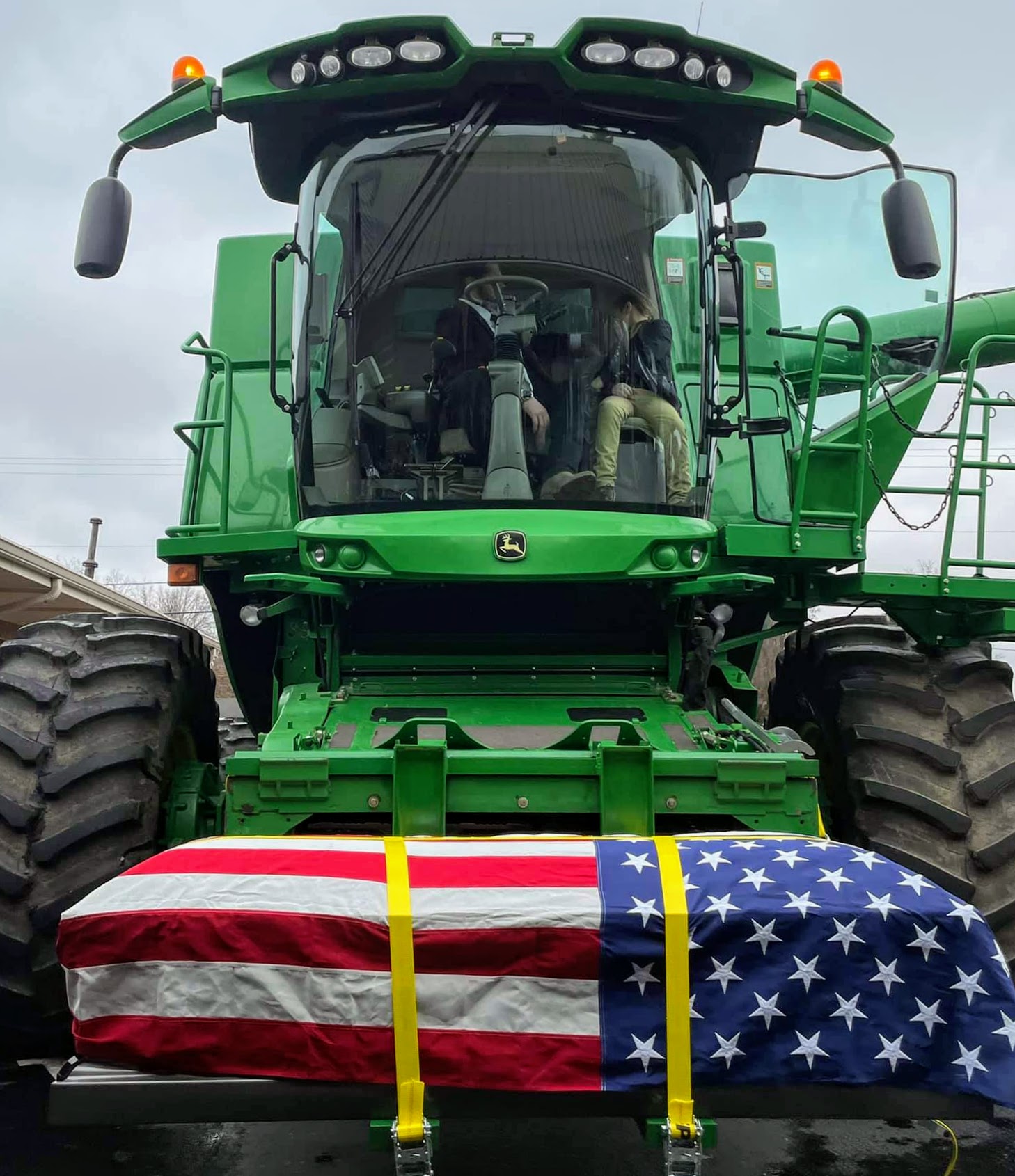
Small walked a six-mile trip to school each day until the fifth grade, and worked alongside five brothers and one sister, gobbling any literature he could lay hands on, all in a quest to see beyond the 160 acres of his world. Insatiable curiosity, as both a blessing and burden, would dominate Small for the rest of his life.
Clearing land in 10-acre cuts for farming acreage, Small and his brothers hauled cypress logs to the banks of the St. Francis, lashed them into 10-piece rafts, and roped the sections together in a massive chain. Small rode Huck Finn-style on the pilot raft, armed with a guide pole to push off the bank during the three-day journey downriver to a saw mill.
The cypress trees were replaced with cotton, a mainstay of Small’s youth, but at 16, he left the white fiber and family land behind, and joined the Civilian Conservation Corps, building trails for a dollar a day. Months later, and pockets no longer bare, Small plunked down $75 on a Model B Roadster with a rumble seat, and roared off to the shiny lights of New Orleans. In quick time, Small was drafted into the Navy and sent to Pearl Harbor, shortly after the 1941 attack.
Post-WW2, Small returned home to the family farm, spotted a glimpse of the future and made a life-altering investment: $3,500 for a shot at tomorrow.
Trials and Tribulations
Sensing a dynamic shift in the full mechanization of U.S. agriculture, Small drove west into the Great Plains, taking a reconnaissance trip in order to gauge the logistics of harvest, and in 1951, he paid a sizable $3,500 for a self-propelled John Deere Model 55 combine. Pusher combines were drastically transforming U.S. agriculture and Small correctly read the tea leaves of change. With a $2,000 windfall waiting for a single season of cutting, Small jumped into the custom harvest game, and never looked back as his fleet exploded into a caravan of combines, grain trucks, and flatbeds, buccaneering across the U.S. for a stunning 60-plus years in an unbroken chain.
Small was at the vanguard of a unique moment in agricultural history—the start of the wheatie combining wave. Despite few rules or regulations, minimal help or guidance, and severely limited communication, a combining army began a yearly march across America, with Small in the middle of the fray, commanding a fleet of 20 combines atop an ocean of grain.
Small’s two sons, Joe and Byron, grew up as permanent fixtures in the combining roadshow, attached to their father’s side, whether rolling in endless Texas or Nebraska acreage, Montana’s Golden Triangle, or the Mississippi Delta. Name the U.S. state and county, and the probability is sky-high: Small and his sons once cut the crops.
Joe spent over 60 years alongside his father on the road, soaking in the varied nuances of agriculture in almost every state in the Union. “There’s no way to describe the trials and tribulations,” Joe says. “How do you make people understand what farming and cutting was like back then? Maybe there are no words. Every day, we’d wake up and our heads would be pointed in a different direction.”
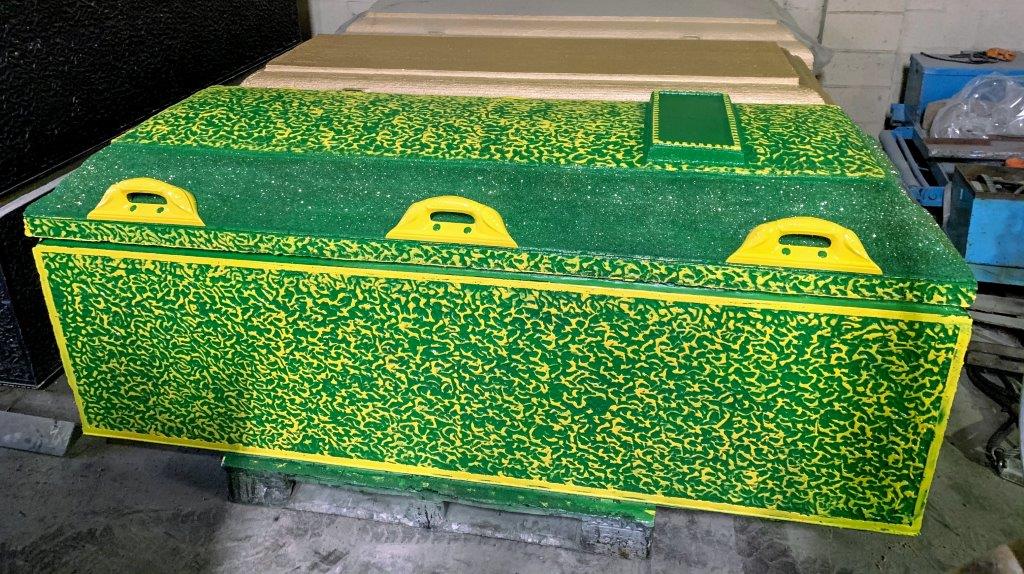
The opportunity of the age, Joe insists, came with heavy risk. “This was a part of farming where people like my dad left home and never knew if he was gonna come back broke, with a pocketful of money, or even with his life. It was a time of real danger, because the unknown was always hovering right around the corner, but it never bothered him. Too often, people live in fear today because of the unknown, but my dad looked at the unknowns as a positive. He taught his kids the ability to step over fear and go into the unknown.”
Small cut grain for the same agriculture operations, year-in and year-out, often over a 30- to 40-year span, and as his reputation spread and farmers sought his services, Time approached Small in late 1978 and scheduled his photo for the cover—until he was bounced to the second page by the death of Pope John Paul l. The loss of the cover position on one of the most prestigious magazines in the world was of little concern to the freewheeling Small: “That ain’t bad when you lose the front spot to the pope.”
A Farming Champion
Start to finish, the rise of a Bootheel boy from cypress slough to the pages of Time and entrepreneurial success is a remarkable tale of ingenuity and bootstrap effort. Small is etched into agricultural and U.S. history, explains his son, Joe: “He was there when farming went from primitive to industrial, but it was a risky time when people didn’t know where they were going until they got there. My dad is one of those farmers that is part of the group of people that built America, but just on a smaller scale than the big names you read about or see on television. Our country should never forget these type of people.”
Indeed. It is often said a person dies twice. First, when a soul departs, and, second, whenever a name is spoken out loud for a final time. The first death is the immediate physical loss of life; the second death comes years later with the final extinguishment from memory.
Not so with Small. His mark is tattooed on agriculture’s past, and his impact on U.S. history is permanent. Respect to Jessie Small, a farming champion: 1923-2020. Rest in Peace.
For more, see:
Ghost in the House: A Forgotten American Farming Tragedy
Rat Hunting with the Dogs of War, Farming's Greatest Show on Legs
Misfit Tractors a Money Saver for Arkansas Farmer
Predator Tractor Unleashed on Farmland by Ag's True Maverick
Government Cameras Hidden on Private Property? Welcome to Open Fields
Farmland Detective Finds Youngest Civil War Soldier’s Grave?
Descent Into Hell: Farmer Escapes Corn Tomb Death
Evil Grain: The Wild Tale of History’s Biggest Crop Insurance Scam
Grizzly Hell: USDA Worker Survives Epic Bear Attack
A Skeptical Farmer's Monster Message on Profitability
Farmer Refuses to Roll, Rips Lid Off IRS Behavior
Killing Hogzilla: Hunting a Monster Wild Pig
Shattered Taboo: Death of a Farm and Resurrection of a Farmer
Frozen Dinosaur: Farmer Finds Huge Alligator Snapping Turtle Under Ice
Breaking Bad: Chasing the Wildest Con Artist in Farming History
In the Blood: Hunting Deer Antlers with a Legendary Shed Whisperer
Corn Maverick: Cracking the Mystery of 60-Inch Rows
Against All Odds: Farmer Survives Epic Ordeal
Agriculture's Darkest Fraud Hidden Under Dirt and Lies


